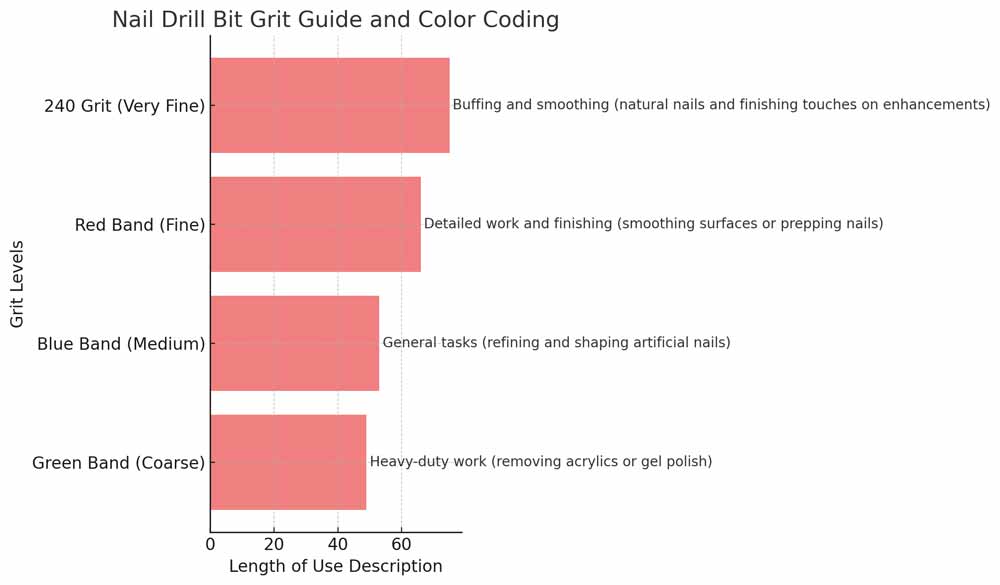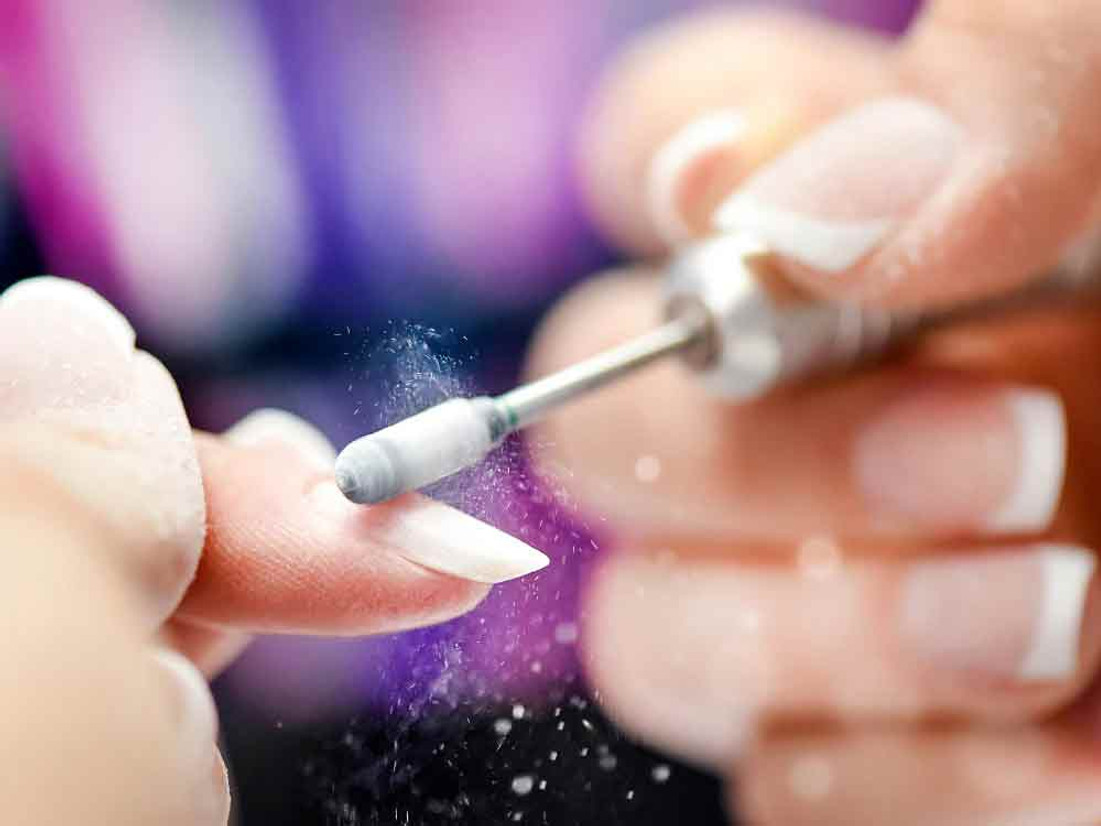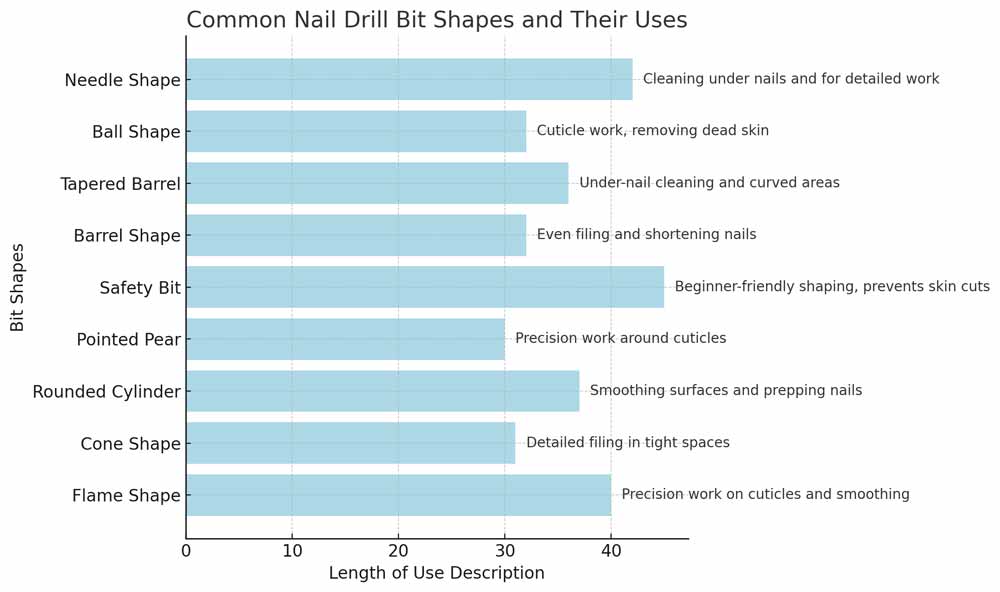▷ Nail Drill Bits Guide for Beginners | Daniella Fer
Nail Drill Bits Guide
Nail Bits are essential tools for both professional nail technicians and at-home enthusiasts. These small Nail Drill bits, designed for electric nail drills (E-Files), come in various shapes, materials, and grit levels, each with a specific purpose. Whether you’re shaping natural nails, removing gel polish, or refining acrylic extensions, choosing the right tool is crucial for achieving precision and protecting nail health. In this guide, we’ll cover the types of materials, shapes, grit levels, and more to help you choose the right bit for your needs, and how to use them effectively.
2. Nail Drill Bit Materials
The material of a drill attachment determines its durability and function. Each material serves different purposes based on what you’re working with—natural nails, acrylics, or gel polish.
- Carbide Bits: Carbide bits are super durable and perfect for getting rid of tough materials like acrylic or gel polish quickly.. They typically have cuts or grooves along the surface, making them efficient at material removal without generating excessive heat.
- Example from Dan’s Nails: Carbide Cone Nail Drill Bit, Coarse 15mm (Green Band).
- Diamond Bits: These are covered with crushed diamonds and are primarily used for smoothing and shaping. They are great for cuticle work, refining the nail bed, and finishing after applying acrylic or gel.
- Ceramic Bits: Known for staying cooler than carbide, these attachments are great for prolonged use. They come in varying grit levels and are ideal for both natural nails and enhancements.
- Silicone Bits: These are softer and less abrasive, designed for natural nails or buffing the surface. They are perfect for gentle work on delicate areas like cuticles.
- Example: Silicone Nail Bit – Cone 240 Grit.
3. Common Nail Bit Shapes and Their Uses
The shape of a drill bit is just as important as the material. Each serves a distinct purpose, from removing product to prepping nails for extensions or cleaning under the nail. Here’s a breakdown of the most common shapes and their uses:
- Flame Shape: This shape is best for precision work on cuticles and surface smoothing. Its pointed tip helps reach narrow areas, making it ideal for detailed work.
- Example: Diamond Nail Drill Bit – Flame Shape (Red Band).
- Cone Shape: This shape is great for getting into tight spaces and performing detailed filing work. It can also be used to remove product around the edges.
- Rounded Cylinder: This tool is ideal for smoothing surfaces and prepping nails before applying acrylics or gel. It’s also effective for shortening nails.
- Pointed Pear: Excellent for precision work around the cuticles and nail edges, providing more control for delicate tasks.
- Safety Bit (Rounded Top): Designed with a rounded tip to avoid cutting the skin, making it perfect for beginners. This bit is often used for shaping and refining without the risk of injury.
- Barrel Shape: This shape is used for filing nail surfaces evenly or shortening the length of the nails. It’s perfect for large surface areas.
- Tapered Barrel: Ideal for under-nail cleaning, this shape tapers towards the end, making it great for reaching tight spots and getting a smooth finish on curved areas.
- Ball Shape: Typically used for cuticle work, this shape helps to remove dead skin around the nail bed with precision.
- Needle Shape: A very precise shape used for cleaning under the nails or getting into the sides. It’s often used for detailed artwork or for cleaning up edges.
4. Grit Guide and Color Coding
 Understanding grit and color coding is essential when selecting the right drill attachment. Grit refers to how coarse or fine the bit is, while the color bands on the bit indicate this level visually.
Understanding grit and color coding is essential when selecting the right drill attachment. Grit refers to how coarse or fine the bit is, while the color bands on the bit indicate this level visually.
- Green Band (Coarse): Coarse bits are used for heavy-duty work, such as removing bulk from acrylics or gel polish. They remove material quickly but should be used with care on natural nails to avoid damage.
- Example: Carbide Cone Nail Drill Bit, Coarse 15mm (Green Band).
- Blue Band (Medium): Medium grit is versatile and can be used for a wide range of tasks, including refining and shaping artificial nails. It’s the most commonly used grit for general filing.
- Example: Diamond Nail Drill Bit – Flame Shape (Blue Band).
- Red Band (Fine): Fine grit bits are perfect for detailed work and finishing. They are ideal for smoothing the surface or prepping the nail for polish without removing too much material.
- Example: Diamond Nail Drill Bit – Rounded Cylinder (Red Band).
- 240 Grit (Very Fine): These bits are perfect for buffing and smoothing natural nails or creating a smooth finish on enhancements.
- Example: Silicone Nail Bit – Cone 240 Grit.
5. How to Use Nail Bits for Different Nail Types
Using the correct bit for the Fingernail type is crucial for maintaining nail health and achieving the best results.
- Natural Nails: When working on natural nails, it’s essential to use softer bits with finer grit to avoid damaging the nail plate. Bits like the Silicone Nail Bit – Cone 240 Grit are gentle and ideal for buffing and refining.
- Acrylic Nails: For acrylics, coarser attachments are needed to remove material quickly. Carbide bits with a coarse grit, such as the Carbide Cone Nail Drill Bit, Coarse 15mm (Green Band), are perfect for this task. Additionally, 5-in-1 bits are also useful for both removing and shaping acrylics.
- Gel Polish Removal: Gel polish can be removed using medium or coarse bits. A bit like the Carbide Cone Bit 2.3mm Blue Band Grit can efficiently remove gel polish without harming the natural nail underneath.
6. Common Questions (People Also Ask)
What drill bits are used for what nails?
Drill bits vary based on the material you’re working with. Coarser bits are ideal for acrylics, while finer bits should be used on natural nails.
What are the colors of nail drill bits?
Color codes, such as green (coarse), blue (medium), and red (fine), indicate the grit level and purpose of the bit.
How do I know which drill bits to use?
Consider the nail type and task. For acrylics, choose coarse bits, and for natural nails, opt for fine or extra-fine bits to avoid damage.
Do all nail bits fit all machines?
Most bits are universally compatible with standard drill machines, but it’s essential to check the shank size (commonly 3/32″).
7. Maintenance and Care
Proper maintenance of your tools is crucial for both hygiene and extending their lifespan. Here are some tips:

- Cleaning: After each use, clean bits with a brush to remove debris. For metal bits like carbide and diamond, ultrasonic cleaners can help remove fine particles.
- Sterilizing: Soak bits in a disinfectant solution and allow them to dry fully before the next use to prevent contamination and ensure client safety.
- Storage: Store your bits in a dry, clean case to avoid damage and contamination.
8. Conclusion
Nail Drill Bits are essential tools for achieving professional-level manicures and pedicures. By understanding the different materials, shapes, and grit levels, you can select the perfect bit for every task, whether you’re working on natural nails, acrylics, or gel polish. Remember, using the right tool makes all the difference in both precision and nail health.
At Dan’s Nails, we offer a range of high-quality Nail drill bits designed to meet all your needs. From coarse carbide bits for removing acrylics to fine diamond bits for delicate work, you’ll find everything you need for the perfect manicure.
Recent Posts
-
▷ Acrylic Nails vs UV Gel Nails: What's the Difference
Acrylic and gel nails are extensions applied to your natural nails to achieve a much more polished
-
▷ Nail Drill Bits Guide for Beginners | Daniella Fer
Nail Bits are essential tools for both professional nail technicians and at-home enthusiasts. These






